

If your plot involves any sort of violent crime, whether you’re a mystery/crime writer or not, you should know forensic nursing. In broad terms, forensic nursing is where the healthcare system and the legal system intersect.
 Photo credit: KOMUnews via Visual Hunt / CC BY
Photo credit: KOMUnews via Visual Hunt / CC BY
Survivors of violent crimes typically come through the ER, where their medical needs are taken care of—setting broken bones, stitching wounds, etc. Ideally, the patient spends as little time as possible in the controlled chaos and tension of the ER; the goal is no more than 45 minutes.
Then they are escorted to a quiet, comfortable room furnished much like a small living room, but with drinks and snacks as well as TV. Anyone accompanying the patient would typically wait here during the examination. The area is secured, and only people the patient chooses to bring are allowed into the room. These people might be family or, perhaps, a trained volunteer from an organization such as Hanover Safe Place, which supports survivors through what is inevitably a traumatic time at the hospital.
The patient then meets with a forensic nurse. The forensic nurse’s role is to record the details of the crime and collect physical evidence. This process typically takes 3 to 4 hours.
Background information comes first, including general medical history as well as questions about any injuries, surgeries, diagnostic procedures, or medical treatments that might affect the physical finding. But then come pages of more detailed and focused questions. For example, in cases of sexual assault, not only question about the assault itself and perpetrator(s) but also about the date, time, type, partner’s race, and relationship of last consensual intercourse; and since the assault, whether the patient bathed or showered, douched, brushed teeth, defecated, urinated, vomited, wiped or washed affected area, changed clothes, or had consensual intercourse.
For strangulation cases, they ask how the patient was strangled—one-handed, two-handed, knee, forearm, ligature—how long it lasted, and whether there was more than one incident.

A danger assessment is conducted as well, focusing on whether the violence is escalating in severity or frequency, whether weapons (especially guns) are available and/or used, drug or alcohol use, presence of children, and control of the survivor’s daily activities and social interactions.

Although the verbal data are crucial, the physical exam is central to forensic nursing. Samples of blood, urine, hair, and swabs of orifices are taken. Specialized equipment is available. Photographs are taken. Hair is combed, nails cleaned and clipped. The patient stands on a plastic sheet to remove clothing, to catch any random debris.
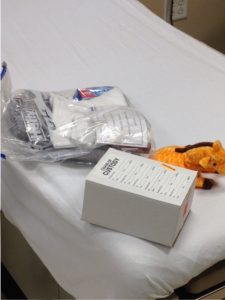
Chain of custody must be carefully controlled and documented.
Children have special treatment as well. They are given a toy that they can keep. They’re also given tablets and pencils or markers to draw pictures that can help in understanding the assault. Sometimes an outline of a person is presented for the child to mark where he or she was touched or hurt.
Improvements and refinements are always in progress. Once upon a time, a survivor might be asked to detail the crime by a dozen different people. Now recounting the crime waits for the forensic nurse, diminishing the impact of reliving it.
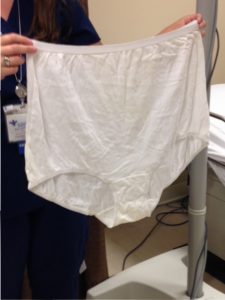
When a patient’s clothes are taken in evidence, they are given generic going-home clothes. These are grey sweatpants, t-shirt, and—until recently—the granny panties pictured above, one size for all. A college student survivor said that having to wear those granny panties made her feel violated all over again.
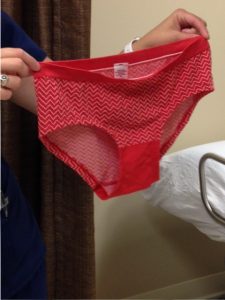
She organized her sorority sisters to provide hundreds of pairs of new panties in varied colors, styles, and sizes. All of the clothing provided to survivors is donated. Should you or your group want to donate new clothes, new toys, child pillowcases, gas cards, food cards—or money!—here’s your contact. And, by the way, she gives talks about the program.

Forensic nursing is a relatively new medical specialty. In 1992, 72 registered nurses—mostly sexual assault nurse examiners—came together to form the International Association of Forensic Nurses. Since 1993, Bon Secours Forensic Nursing in Richmond has served survivors of sexual assault, child sexual abuse, and domestic violence. Now a team of 10 full-time nurses work with 26 agencies to serve survivors of any type of violent crime.
Bon Secours is atypical. There are over 300 hospitals in Virginia, and many of them have no full-time forensic nurses. Therefore, patients from all over central Virginia can end up at Bon Secours. They assist more than 2,200 patients per year.
Bon Secours is a premier forensic nursing program. For the sake of your story line, you might create more conflict in the story if the characters botch the process. A screw-up could taint evidence or miss it. Insensitive treatment could leave the survivor among the walking wounded.
Last but not least, put this worthwhile event on your calendar!

Benefiting Bon Secours Forensic Nursing
Sunday, October 30, 2016
2:00-5:30 p.m. at Hilton Richmond
Hotel & Spa
Short Pump





First know the popular myths about suicide. According to “Five myths about suicide,” a Washington Post Weekly article by Matthew Nock (May 2016), five of these are as follows:
We’re experiencing a suicide epidemic.
Fact: Suicide is not gaining sudden prevalence. Fewer people are committing suicide today than a hundred years ago.
Suicides are most common during the winter holidays.
Fact: The rate is consistently highest in the spring.
Most suicides are impulsive acts.
Fact: Most people who attempt suicide have a plan, even if the act appears impulsive. Nearly half visit a doctor in the month before their suicide, and nearly two-thirds tell someone they’re thinking about it.
There is a suicide gene.
Fact: There is no such gene—although a family history of suicide does put people at elevated risk of suicide.
We know how to prevent suicide.
Fact: We are not yet able to spot or stop it.
Bartlett’s Dictionary of Americanisms was published in 1848! It explains what a chore is (the equivalent of char in England), and polk, meaning sack. Needless to say, it’s my oldest slang dictionary, and it nicely illustrates that what was slang 200 years ago has moved into—and sometimes through—mainstream English!
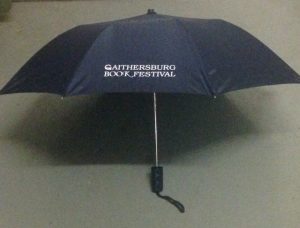



Genetic mosaics are not so rare, formed by fusing two gametes in utero or a placenta shared between fraternal twins or by the mother’s cells crossing the placental barrier and continuing in her child. Imagine that a woman had children with all of her genetics, so the cell lines were thoroughly mixed.
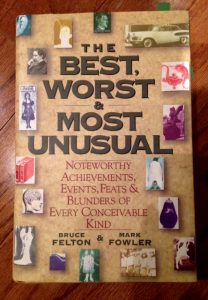



According to Gallup polls, over half of Americans say they are at least a little superstitious. Consider the value of superstition for your character(s).
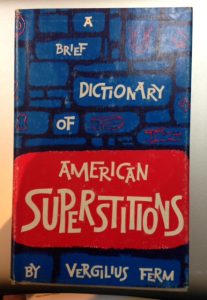
People who are truly not superstitious are nevertheless well aware of what’s associated with Friday the 13th, black cats, broken mirrors, four-leaf clovers, etc. Such people might well make a wish with fingers crossed, or when tossing a coin into a fountain or other water, when blowing out birthday candles, or kissing a horseshoe. If you don’t consider yourself superstitious, you may engage in superstitious thinking or behavior nevertheless, without paying attention—an habitual or non-conscious action. For me, that’s knocking on wood.
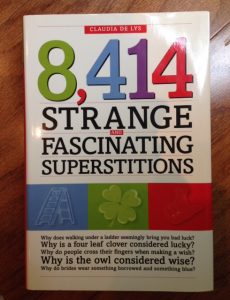
This collection by Claudia De Lys has an excellent two-page description of this and other wood superstitions, ranging from the balsam needle pillows to wooden rosary beads, traced back to the spirits believed to live in trees that bring on the seasonal changes (life, death, and resurrection) or maintain the evergreen state (immortality). A tree or wood was touched when asking favors and again in appreciation of good fortune received.

Diana Gabaldon’s work is an excellent example of effectively using her characters’ beliefs, superstitions, and ritual acts—everything from beliefs about witches and fairies to making the sign of the cross—to illuminate both the characters and the historical context.
Stuart Vyse, Ph.D., author of Believing in Magic: The Psychology of Superstition, is an authority on magical thinking. He differentiates superstition from obsessive-compulsive behavior or other mental disorders and religious ritual, and discusses the functions each serves. I’ll stick with superstition for the sake of (relative) brevity.
Anything as nearly universal across time and cultures as superstition must serve some beneficial function! In a 2010 paper by Damisch, Stroberock, and Mussweiler, “Keep Your Fingers Crossed! How Superstition Improves Performance,” the researchers argue that superstitions give people a sense of control in chaotic situations. The major outcome of this research was that people who were allowed to solve problems with their lucky charms at hand performed better than when those charms were absent.
But the important point is that it is performance based. So wearing mismatched socks when playing baseball or tennis—or mah jongg jewelry when deep into that game—might improve performance.
But lucky charms have no impact on outcome when the results are due to chance. So skip the lucky dice—unless you just like the look.
These researchers point out the ways in which this phenomenon may be wide-spread and important, for example in alcoholism. Many if not most members of AA attribute their abstinence to the higher power in their lives giving them strength. If they believe, they are more likely to stay sober.

Some people are more superstitious than others—athletes and actors are notoriously so—and superstitions run in families. One example is a Virginia friend who says, “Rabbit, rabbit, rabbit,” first thing in the morning on the first day of each month to ensure a good month. Her daughter in Texas does the same thing. And now they text each other to see who says it first!
And, incidentally, women are more superstitious than men. Vyse relates this to locus of control. People who have an internal locus of control (I am master of my fate) are less superstitious than those with an external locus of control (life happens to me). Compared to men, women still feel that they have less control in their own lives. So maybe they wear special earrings for dominoes, euchre, and bridge for a reason!
Vyse also makes a connection between performance improvements and effort. He says that lucky charms don’t significantly reduce anxiety, but they do increase persistence. So maybe that’s what’s going on with a friend who happens to be a lapsed Catholic. When she loses something, she still says what she calls “the kid’s version of the prayer to St. Anthony”: Tony, Tony, come around. Something’s lost and must be found. She swears it works.
Truly magical thinking is taking an action that has no logical way to affect the outcome but may bring comfort anyway. A third friend who grew up in a Navy family won’t watch people leave because that means they won’t come back. She attributes this to her life on base, when families would see their husbands/fathers off at the dock but turn away as soon as the ship was underway.
When pressed, many non-superstitious people will admit that they prefer not to walk under ladders, step on graves, or open umbrellas indoors. They prefer to leave a building by the same door through which they entered, and they want to round an object in the path on the same side as their companion. Do you always include money when you give a purse or wallet? Does the recipient of a gift knife have to “pay” the giver at least a penny? Superstitions are everywhere, everyday, not just on Friday the 13th!
Give your characters superstitions and/or rituals. It can add interest, tell something about the person’s ethnic or family background, and illustrate her/his anxieties and feelings of control.